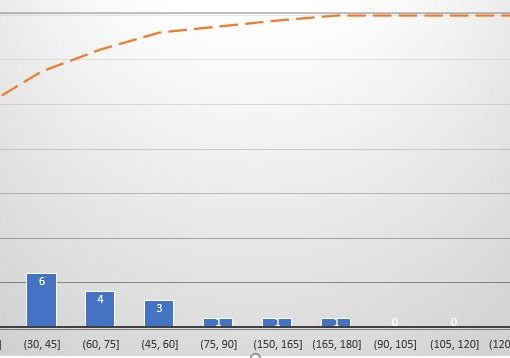
In this article, we’ll review some of the best React UI component libraries, and how to choose the right one for you. The article is written primarily for beginner React developers, but you’ll need some familiarity with specific terms in React.
React powers the user interfaces (UI) of close to 10 million websites around the world. While the base library of React is solid, there are multiple component libraries filled with valuable design elements for your React app or web development project.
To help you find the best React UI library for your current project, let’s take a look at the most popular React UI libraries on GitHub. We’ll analyze their application in development and bring examples, as well as look at their popularity among developers based on usage statistics from GitHub and npm.
Let’s start with why you should be thinking about using a React UI library in the first place.
Do I need a React UI Component Library?
Different React UI component libraries each have their pros and cons, which we’ll discuss more in detail below. But in general, using any component library can have many benefits that will help you when working on your React project:
- Beginner-friendly. UI libraries consist of prebuilt components like buttons, form fields, etc. So, as a beginner, you won’t have to figure out how to create any of the necessary elements from scratch. Instead, you can focus on the implementation and customization with the help of the documentation.
- Faster prototyping. With ready-made React components at your disposal, you can quickly create several functioning prototypes. This means you can prove that the design concept is functioning without having to spend too much time on any of the details.
- Saves time. Using a component library saves time not only when prototyping, but also when already working on your React project. It enables you to write less code, as you won’t have to write all the styles yourself.
- Recognizable components by users. Innovation to a certain extent helps your project stand out. But too much innovation in designing UX/UI can put users off. As the UI elements in libraries are designed to be universal, they won’t cause any friction for your users.
- Customizable components. Despite being universal, most elements can be customized at least to some extent. Each library gives you a different amount of control over the customization, but you’ll be able to make sure your website doesn’t look to much like many others.
- Proven compatibility across devices. Most prebuilt UI components are mobile-responsive by default, which means you won’t have to put a lot of extra effort into ensuring your React project works on different types of devices.
- Accessible by default. Most popular React UI component libraries have built-in accessibility features or even fully adhere to WCAG or other standards and best practices. Thanks to this, you won’t have to worry about self-coding semantic tags or keyboard navigation.
- Crowd-sourced. UI component libraries often have their communities centered around GitHub. This means users can raise issues, request features, and also easily become contributors to the libraries.
Despite these many upsides, even the best React UI component libraries have some downsides that you should consider before you commit to one:
- Customizing components can be difficult. Depending on the specific library you choose, the ease of customizing components differs. With some React libraries, you get primitive components that are meant to be heavily customized by the developer, but with others, getting the result you want can be tricky.
- Similar web design with other sites. Each React UI library has its design system, so if you choose to use a popular library but don’t customize the components or theme enough, your site can end up looking very similar to other sites using the same library — in some cases, even unoriginal. However, depending on your project, that might not be an issue at all.
- Support relies on the community. Most React UI libraries don’t offer official support but instead guide their users to Stack Overflow, GitHub, Discord, or other similar channels. With less popular libraries, the community is smaller, and getting help can be more complicated.
So, with these important considerations out of the way, let’s take a look at the most popular libraries based on GitHub statistics. We’ve listed the libraries based on their number of active projects on GitHub, starting with the most popular.
By the end of this post, you’ll hopefully have found the best React-based UI components library for your web or mobile app development project.
1. MUI (formerly Material-UI)
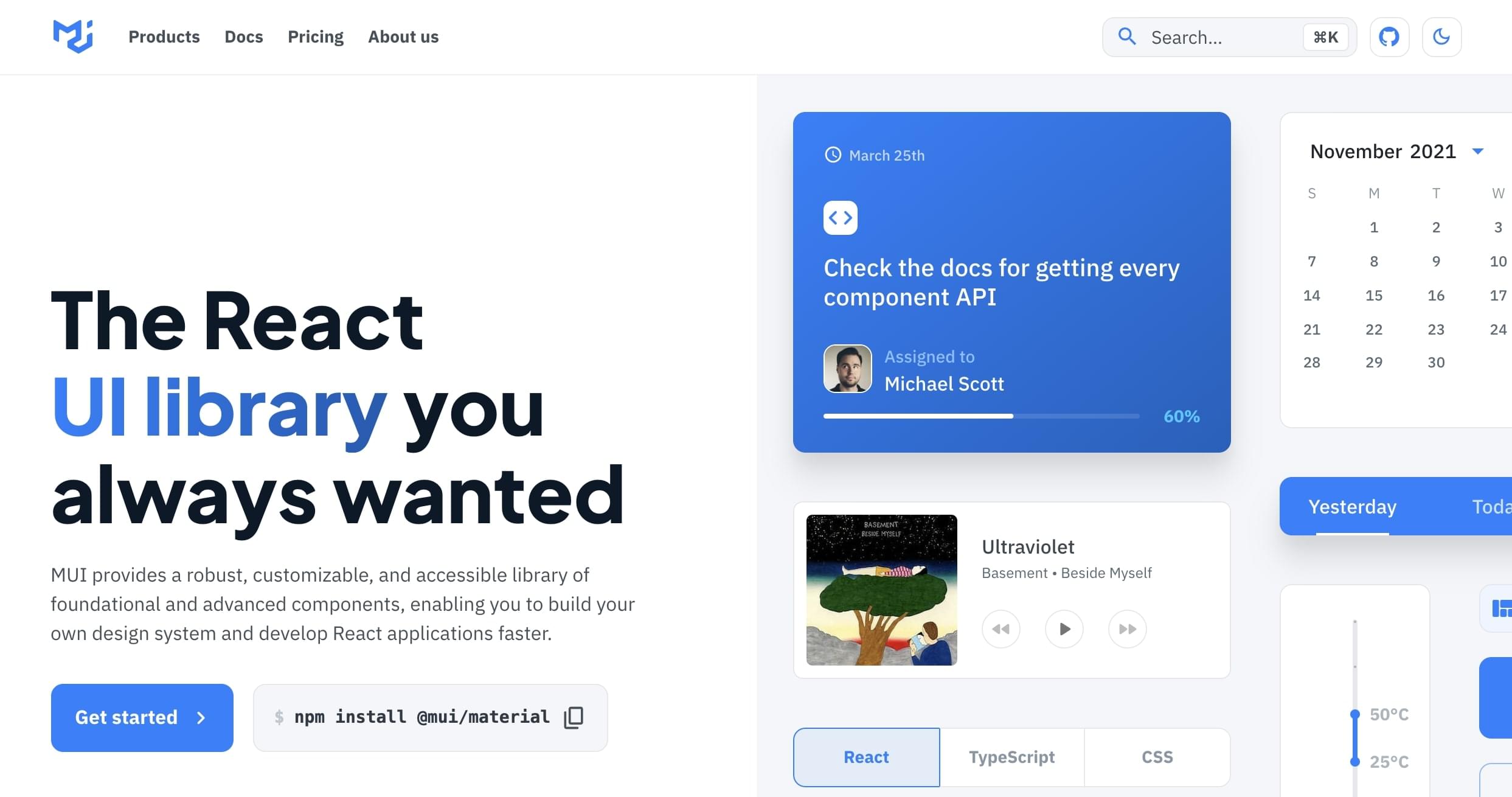
Used by more than 745,000 projects on GitHub, MUI is a straightforward and customizable React components library based on Google’s Material Design. So, MUI is not simply a component library, but an entire design system. It features a wholesome system of guidelines, design principles, and best practices of UI design. MUI is built on 63.9% JavaScript and 36.1% TypeScript.
You can use MUI with its large set of components to easily create a user interface in React applications. Either use the existing Material Design components, customize them, or create your own design system. Thanks to MUI’s ready-made components and in-depth documentation, you can create clean and beautiful mobile or web apps fast — even with little previous design experience.
As the Material-UI design system that MUI is based on was created by Google, it’s also used on Google’s own platform. Therefore, MUI components can have a distinctly Google-like look and feel. On the one hand, this means MUI can be an especially great choice for building Android apps, as the app’s visuals will fit well with the operating system.
But on the other hand, any website or app created with this library — if not customized enough — could be easily associated with Google.
Still, seeing how much MUI is used and how many GitHub stars it has, it’s one of the best React UI component libraries out there. It offers a large number of React components, suitable for a wide variety of general-purpose development projects. MUI is used by medium.com, Scale AI, and UNIQLO, among others.
The picture below shows an example of MUI rating variants.
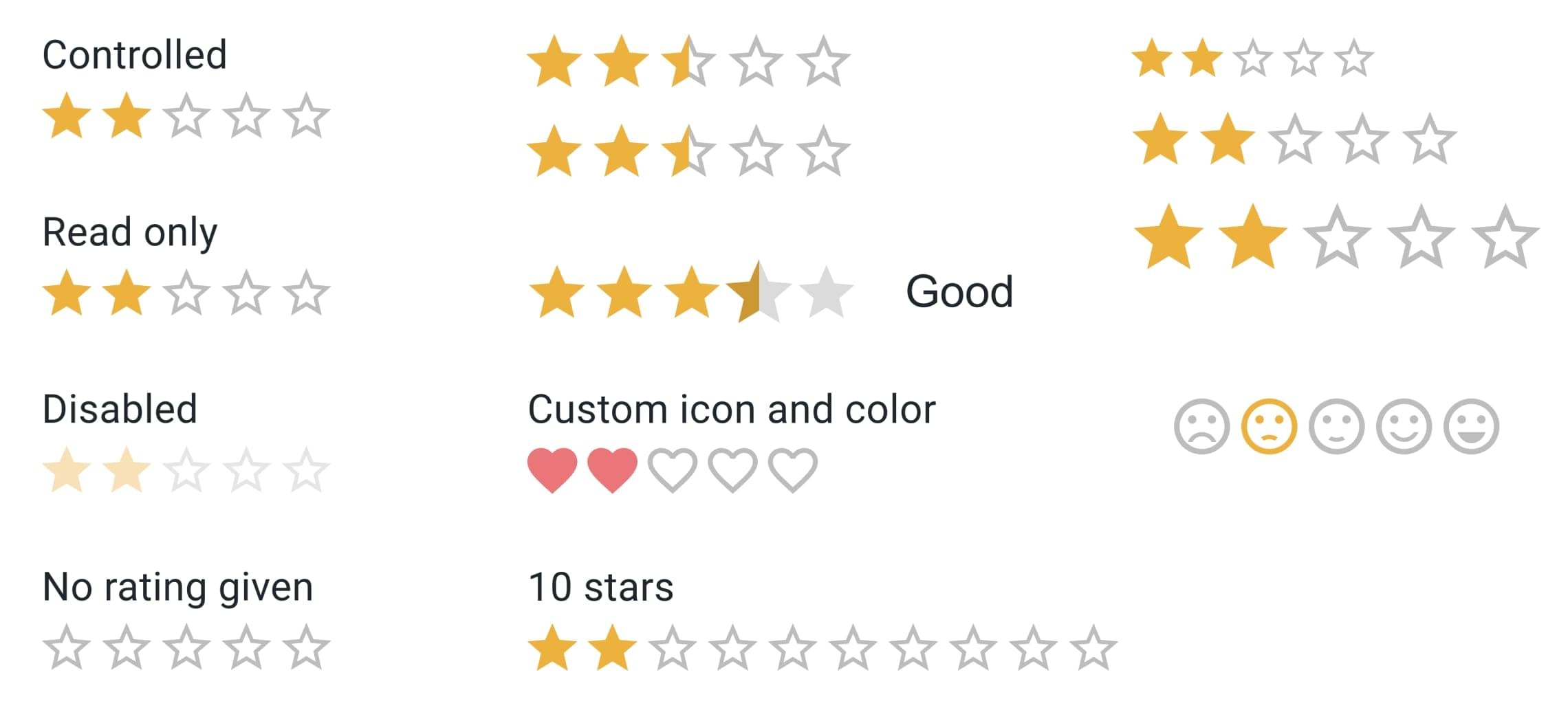
You can install the MUI components library using npm:
npm install @mui/material @emotion/react @emotion/styled
Or yarn:
yarn add @mui/material @emotion/react @emotion/styled
2. React-Bootstrap

Used by 605,000+ projects on GitHub, React-Bootstrap is one of the oldest React UI component libraries out there. In a nutshell, it’s the popular frontend framework Bootstrap completely rebuilt in React. The library consists of ready-made components that are fully responsive and accessible. All the design elements are also highly customizable.
React-Bootstrap can be used for UI foundations, websites, and designing applications. The library is built on 59.4% JavaScript, 38.3% TypeScript, and 2.3% SCSS, and the latest release is compatible with the most recent Bootstrap version, 5.1.
One important upside to using React-Bootstrap is the fact that it’s compatible with the thousands of Bootstrap themes out there. Also, creating custom themes is easy when you keep in mind the classes and variants defined in Bootstrap. On top of that, with React-Bootstrap, you can import only the individual components you’re using, which can help minimize the total amount of code. It’s also a beginner-friendly library, thanks to its proper documentation.
However, as a downside, if you’re familiar with Bootstrap and decide to choose React-Bootstrap for your development project, you’ll have to learn a new API. Moreover, when compared to some other libraries, like MUI or Ant Design, React-Bootstrap has a somewhat smaller set of components.
In the end, React-Bootstrap’s popularity is a clear sign that it’s a great choice for a wide variety of development projects. And if you’re already familiar with Bootstrap, it can feel natural to use React-Bootstrap, too.
The image below shows an example of React-Bootstrap’s button variants.
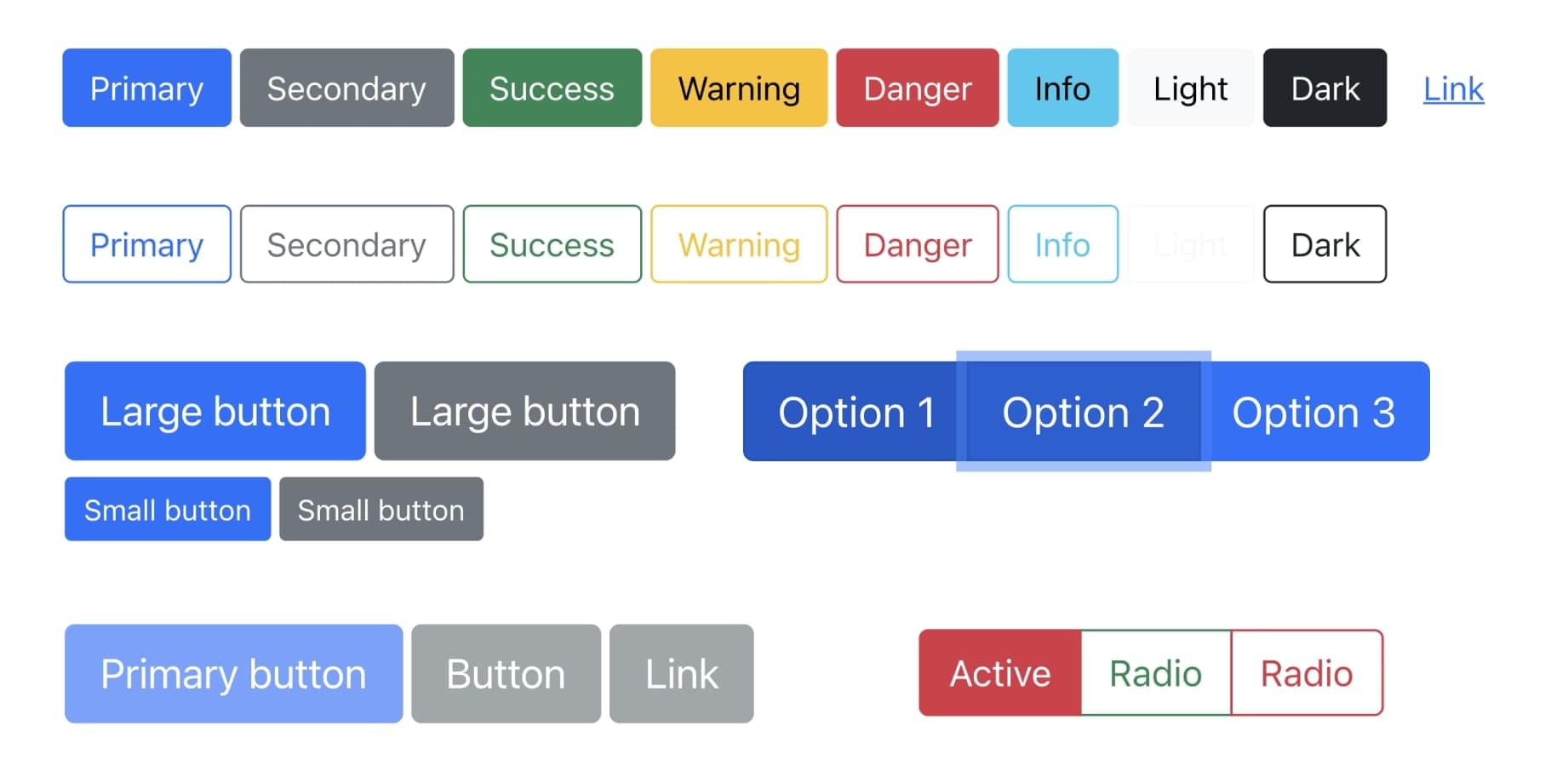
How to install:
npm install react-bootstrap
You can install React-Bootstrap components using yarn:
yarn add react-bootstrap
3. Ant Design
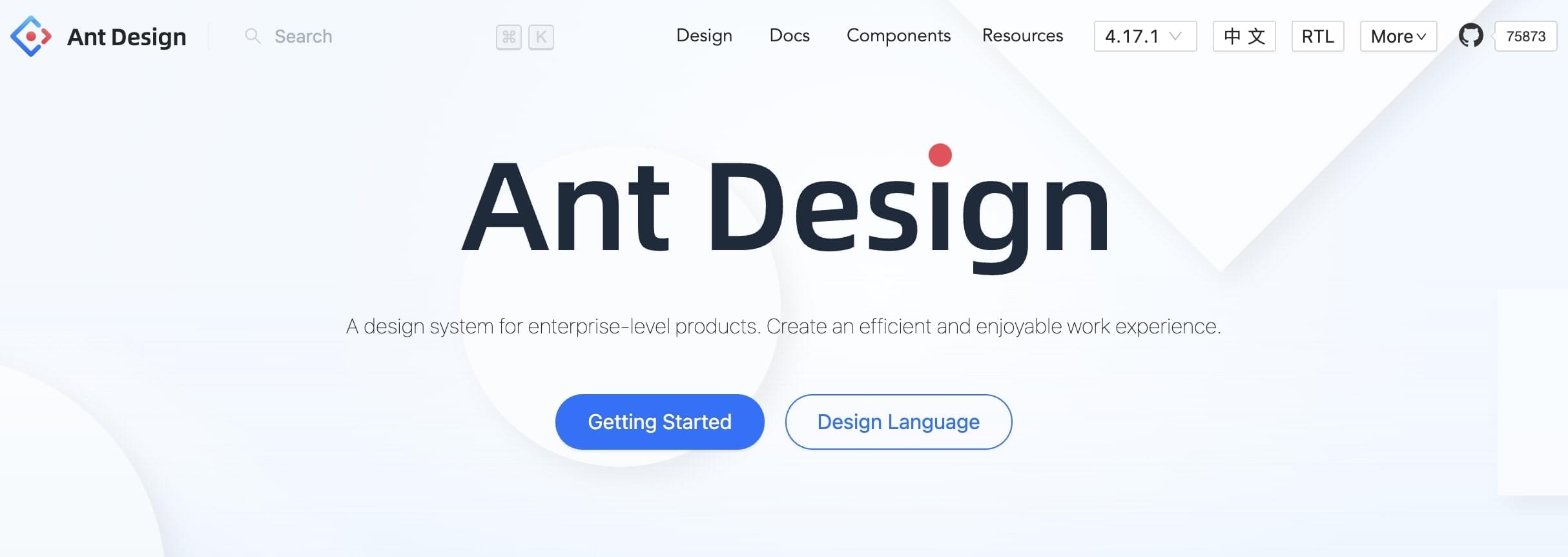
Used by over 255,000 projects on GitHub, Ant Design describes itself as a React UI library and design system for enterprise-level users, meaning that the elements are designed for business use. It was created by Alibaba, the Chinese tech giant.
Ant Design offers a large set of high-quality components that are great for building entire UI frameworks quickly — or you can just use individual components. The library is built on 43.7% TypeScript, 31.1% JavaScript, 24.9% Less, and 0.3% unspecified code.
Ant Design is a great React component library, in part thanks to its great documentation that includes plenty of guidelines, examples, and variants. In addition to that, it’s also a robust platform when it comes to customizing the existing components and themes in detail.
Furthermore, what’s great about Ant Design is its compatibility with lots of third-party React libraries and several of their own products, like AntV Data Visualization, Ant Design Charts, and Ant Design Mobile. These help expand the number of use cases that you can cover with their libraries.
One of the downsides to Ant Design is its huge bundle size (1.2 MB), when compared to other React libraries, which are usually around several hundred kilobytes. And if you’re not working on a development project with considerable business needs, then this library might be a bit of overkill.
In addition to Alibaba, Ant Design is also used by the likes of Lenovo and Toyota, so it’s a great choice for high-level business projects. And the thorough resources can still make it a great option for beginners. On top of that, it has even more stars on GitHub than MUI does, which is more evidence of its greatness.
The image below shows an example of icon variants in Ant Design.
![]()
You can install Ant Design components using npm:
npm install antd
Or yarn:
yarn add antd
4. Reactstrap

Used by 241,000+ projects on GitHub, Reactstrap offers straightforward and self-contained components for Bootstrap 5.1. The UI elements are responsive, simple in design, and applicable for a variety of projects. Reactstrap is built on 74.7% JavaScript, 24.9% TypeScript, and 0.4% Shell.
You can use Reactstrap for complete UI development or only use individual components. It offers great flexibility and prebuilt validation, which is great for quickly building beautiful forms with a great user experience.
As Reactstrap is a younger component library than some other mentions on this list, it does have slightly fewer components available. Then again, this can be a good thing if you’re aiming for a simple design and you don’t want to be overwhelmed by too many options.
The official Reactstrap documentation is thorough, but it mainly consists of code and doesn’t have a lot of explanations. However, as it’s quite a straightforward library, it’s still easy to understand and work with — even for beginners. On top of that, there’s a decent community around Reactstrap and you can speed up your development thanks to the many free and premium Reactstrap themes available.
All in all, Reactstrap is similar to React-Bootstrap, with a few small differences. If you like working with Bootstrap, you can easily choose either for your project.
The image below shows an example of button dropdown variants in Reactstrap.
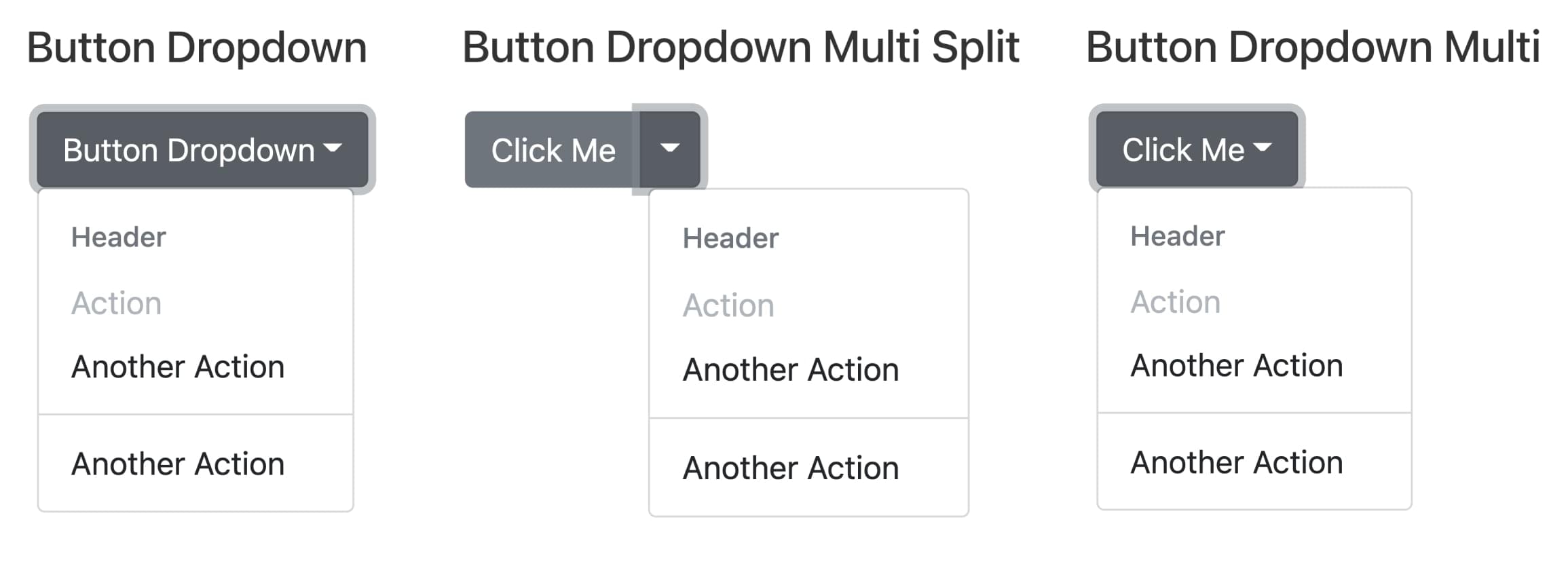
To use Reactstrap, you first need to install Bootstrap:
npm install bootstrap
Or:
yarn add bootstrap
Then you can install Reactstrap using npm:
npm install reactstrap react react-dom
Or using yarn:
yarn add reactstrap
Continue reading
The Most Popular React UI Component Libraries in 2022
on SitePoint.

